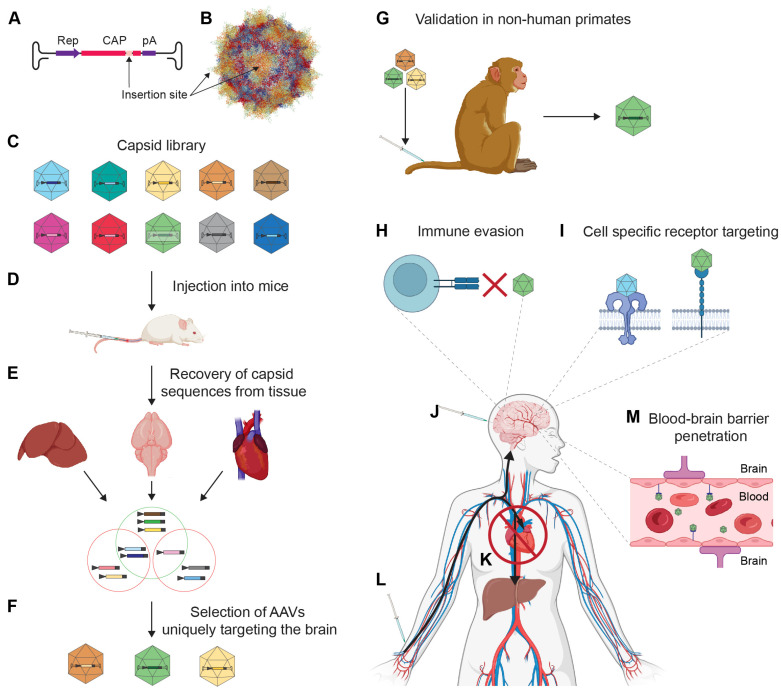Figure 2.
Overview of AAV capsid-directed evolution discovery process for increased brain tropism. (A) Randomized insertions are made within the ORF of the cap gene. (B) The insertions correspond to positions known to give rise to protrusions within the assembled rAAV capsid; for example, they may target the inner face of 3-fold protrusions shown in yellow. (C) The library is assembled in HEK293T cells. (D) This library is then intravenously injected into mice. (E) Once the virus has been systemically distributed within the body and transduction of cells has occurred, the capsid sequences of rAAV vectors are retrieved from organs of interest and characterized by PCR and next generation sequencing. (F) Only sequences that uniquely targeted the brain are selected for downstream use as vehicles for delivering rAAVs to the CNS. (G) The selected rAAVs are reassembled, then validated through injection into NHPs. (H) In addition to tropism, capsids can be optimized for immune evasion. (I) Alternatively, rAAV vectors can be selected for binding to specific receptors. (J,K) Properties of interest of rAAV vectors are dependent on the downstream application. If the intended application is based on (J) intracerebral or (L) intravenous injection. For instance, rAAV vectors intended for intravenous therapy are assessed for their ability to de-target other organs, such as the (K) liver or heart. (M) A major consideration in choosing the delivery route is the ability of a capsid to penetrate the BBB. The figure was assembled with Biorender (https://app.biorender.com/illustrations/6360a504d90edadbfb595fc5, accessed on 1 July 2023).

